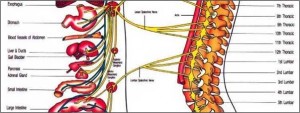 The DuPage County Health Department is pleased to announce that DuPage County has once again been recognized as one of the healthiest counties in Illinois. The rankings are based on quality of life factors such as longevity and overall health status, including physical and mental health.
The DuPage County Health Department is pleased to announce that DuPage County has once again been recognized as one of the healthiest counties in Illinois. The rankings are based on quality of life factors such as longevity and overall health status, including physical and mental health.
The rankings, which cover counties in all 50 states, were developed by the Robert Wood Johnson Foundation. The model has two separate rankings including Health Outcomes (how healthy we are) and Health Factors (how healthy we can be). DuPage County ranks No. 3 overall among 102 counties in Illinois. The County ranks No. 3 in Health Outcomes and No. 1 in Health Factors.
“We are very happy to be ranked among the healthiest counties in Illinois. The Health Department places a high priority on positively and effectively influencing the factors that affect the health of our residents,” said Karen Ayala, Executive Director of the Health Department.
The Health Department has undertaken several county-wide initiatives over the last several years that have contributed positively to the health of DuPage County residents. Most recently, the efforts of two initiatives, Enroll DuPage and the DuPage Narcan Program, continue to drive healthy living in DuPage. “We realize that within those programs, as well as many others, our success is due to the strong partnerships and collaborative approaches within DuPage County,” said Ayala. “These rankings are not the result of a single agency’s efforts, but rather the health care and health care safety net systems that exist throughout our communities.”
“We will not take these high rankings for granted”, says Ayala. “We have a strong history of working collaboratively throughout our community to identify our residents’ health needs and then developing innovative and effective programs that ensure a safety net is in place to keep DuPage County residents healthy.”
The online report, available at www.countyhealthrankings.org, includes an overview of each county in Illinois with a color-coded map comparing each county’s overall health ranking.











